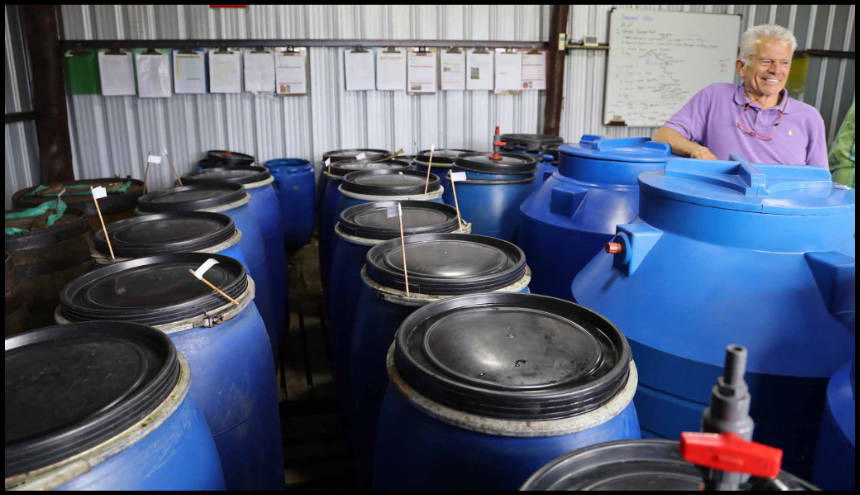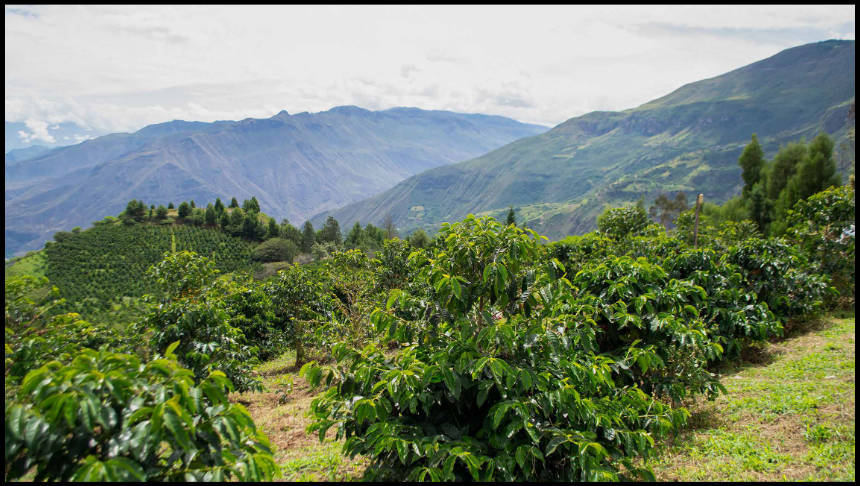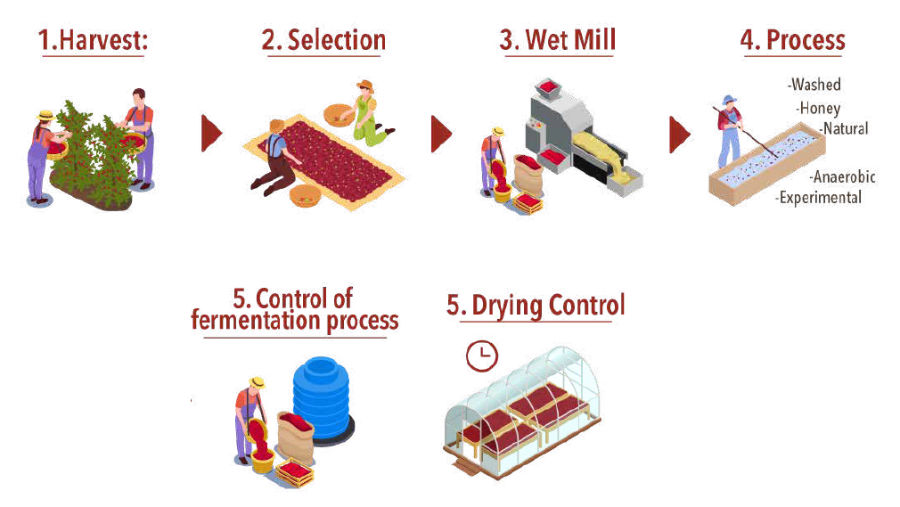My Cart: 0 item(s)
About Ecuador Finca La Papaya Anaerobic Natural
Arrived February 2024, freshly shipped from Ecuador.
Juan Peña is something of a superstar coffee producer in Ecuador and his farm La Papaya is one of that country's coffee gems.
Hacienda La Papaya, situated as a vanguard in the Saraguro region's coffee cultivation, embarked on its journey in 2010 with a clear vision: to uphold excellence in every aspect of coffee production. From pioneering innovative agricultural techniques like drip irrigation to selecting exclusive coffee varietals, the farm set itself apart. Subsequently, its coffees garnered acclaim in both the United States and Asian markets following their inaugural export in 2014, frequently clinching top positions in prestigious international competitions.
La Papaya is located in the Saraguro region of Southern Ecuador, which was directly sourced by Roastmaster.com's owner, Barry Levine. Ecuador is a relatively new coffee origin for us; it's a country with great location and elevation, which are significant traits for growing quality coffee. Located directly on the equator (Ecuador in Spanish!) and sandwiched between Colombia to the north and Peru to its south and east. There are two primary growing regions: north of the capital, Quito, and Loja Province in the south. Both areas have particularly high elevations, with some farms planting up to 2300 meters; it is about the highest grown coffee on earth. You can only grow coffee at this altitude on the equator, and even there exists the potential for frost on the coolest of evenings.

Anaerobic tanks
We made two trips to Ecuador in 2016, the first in June which involved a stay in Quito and a flight to Loja, where we trekked deep into the mountains to get to the rural, scattered coffee farms that dot the region. The growers we met along the way were lovely, warm people who graciously offered us food and water. Throughout our travels we heard about La Papaya coffee and how it was impossible to secure any that season.It became a benchmark of sorts for others when they described their coffee as being "like La Papaya". Near the end of the trip in Quito we were invited to an espresso bar and cafe where a member of their staff was heading into an international competition as the representative from Ecuador. The coffee chosen to represent them was La Papaya.When we asked if there was any to try, we were given about half a pound, freshly roasted. The morning after, we made our first pot, a typica varietal at its finest: bold and exotic. We relished the bag until it was gone, thinking we would not have the chance to acquire any ourselves. But good surprises happen sometimes… and a small amount of the new crop was made available to us. Needless to say-- we snatched it up.
La Papaya is owned and operated by Juan Peña, who comes from a long line of farmers. Previously, he was a long stem rose producer, but he started experimenting with coffee plants about 6 years ago when disastrous weather wiped out his flower fields. After his crops were destroyed, he turned entirely to working on coffee and has worked vigorously to develop a healthy, successful, and horticulturally intentional farm. In addition to his cherry producing crops, he also has a plant nursery and "garden of inputs" where coffee trees are planted several yards apart and labeled with the fertilizer inputs so that they may track the impact of the nutrients on growth and cherry development. The farm is located at a staggering elevation of 2100 meters. Due to the high growing elevation, the coffee has a uniquely bright and sparkling cup profile.
- Producer: Hacienda La Papaya
- Varietal: Typica
- Producer: Juan Peña
- Elevation: 2100 meters (6890 feet)
- Region: Saraguro/Loja
- Process: Anaerobic Natural
- Harvest: March - October 2023
Peña, who secured three consecutive Sprudge Notable Producer awards, shows that Hacienda La Papaya remains committed to a strategy of perpetual research and technological advancement. Collaborating closely with Cuencas University, the farm fosters a culture of interdisciplinary exploration that integrates expertise in egronomics, barista craft, and cacao farming. Through rigorous quality control mechanisms and the incorporation of cutting-edge sensor technology, the farm maintains its dedication to producing exceptional coffee.

The lovely vista from La Papaya
The Typica variety has been at Hacienda La Papaya since 2009, in seeds that were acquired directly from an experimental farm in northern Ecuador. Juan Peña’s farm has maintained a batch of special coffee for seeds that was established in 2010, and in this particular batch, they identify the Mother Plants and take the seeds for reproduction only. They do this with the goal of conserving the variety of the same genetics. This is done through genetic testing performed at World Coffee Research to accurately determine their current genetics.

Looking ahead, Hacienda La Papaya envisions a future where it continues to push the boundaries of coffee research and technological innovation. By remaining at the forefront of experimentation in varietals and processing methods, the farm endeavors to solidify its status as a trailblazer in the realm of specialty coffee, proudly representing Ecuador on the global stage.Hacienda La Papaya, situated as a vanguard in the Saraguro region's coffee cultivation, embarked on its journey in 2010 with a clear vision: to uphold excellence in every aspect of coffee production. From pioneering innovative agricultural techniques like drip irrigation to selecting exclusive coffee varietals, the farm set itself apart. Subsequently, its coffees garnered acclaim in both the United States and Asian markets following their inaugural export in 2014, frequently clinching top positions in prestigious international competitions.
Cup Characteristics: Lots of fruit, notably apricot. Delicious, sweet vanilla and coconut flavors invoking cream soda. Balanced processing keeps the fruit in check. Cacao, grapefruit.
Roasting Notes: This is a high grown, dense bean that will withstand lighter and darker roasting. To retain the dryness it is recommended to pull before 2nd crack, but the bean lends itself to darker roasts to highlight the bold character of the coffee.

